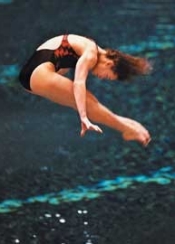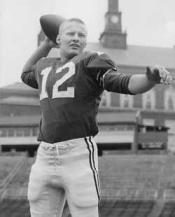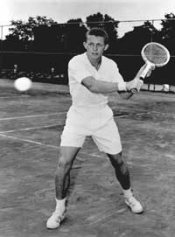How to make an Olympic-caliber dive
by Becky Ruehl, DAAP '99, Olympian
Step 1: Get suited up. I recommend a snug Speedo. From the 10-meter platform, you hit the water at roughly 35 mph. It's a good idea to wear a suit that will stay in place.
Step 2: Warm up. It's also important to stretch before beginning. Touch your toes, preferably with your nose to your knees, for a nice tight pike position.
Step 3: Pick your board. Begin your diving experience on a lower level. Other options are platforms at 5 meters, 7.5 meters and, of course, 10 meters, my favorite. From three stories high, it is the most exciting and the scariest.
Step 4: Choose a dive. Will it be a front dive, a back dive, a reverse dive (facing forward, diving backward) or an inward dive (standing backward, diving into the board)? Will it be a tuck (curled up in a little ball), a pike (bent over, touching your toes) or a layout (stretched out straight)?
Step 5: Plan your approach. Regardless of direction and position, dives need approaches. For front and reverse dives, the approach has at least three steps and a jump with arm circles for momentum and balance. The back and inward approach requires rocking on the end of the board, circling your arms and jumping.
Step 6: Establish air supremacy. What's done in the air is up to you. Dives can include flipping and twisting, anywhere from one to four and a half somersaults and up to four twists. Keep your eyes open as you fly through the air to count somersaults. When spinning is complete, you'll want to kick out and straighten your body to stop rotation.
Step 7: Avoid the belly-smacker. One significant goal in diving is to hit the water with a "rip," the sound made by a splashless entry. To do that, you'll want to enter perpendicular to the water, grab your hands one over the other with palms facing the water and make a quick scoop right below the surface.
Step 8: Practice. Get out of the water and do it all over again. And again. And… .
Becky Ruehl works for Kolar Design in Cincinnati. She became UC's first female national champion in any sport, earning the 10-meter competition title in 1996, the same year she competed on the U.S. Olympic team in Atlanta and finished fourth in the platform competition.
Link:

 Past Issues
Past Issues


